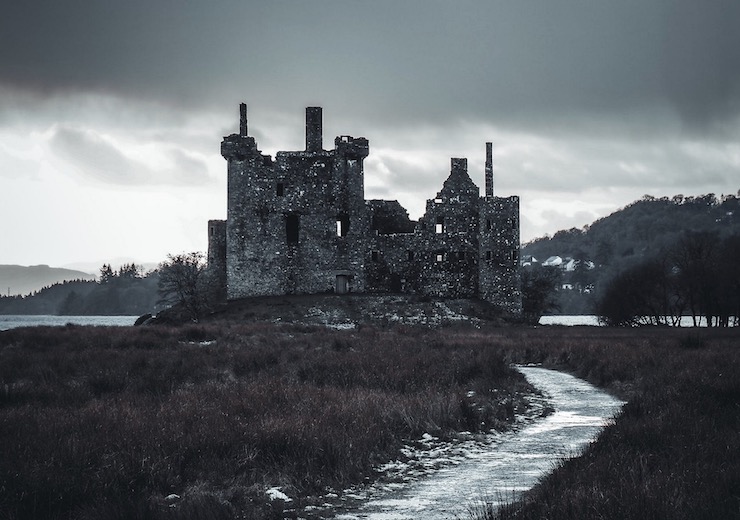
For many, when they think of archeology and historic sites, images of ancient civilizations long buried come to mind. But understanding how history shapes the future does not always date back to fossil discoveries. A team of researchers from the Department of Anthropology and Archeology at the University of Calgary in Alberta, Canada, have begun documenting sites from the past several centuries throughout Alberta and the Yukon Territory. Their goal is to preserve these historic arctic sites so that current and future generations can appreciate and learn from them. The way the team is accomplishing this is with the use of modern technology, drones.
Evidence of North America’s earliest human settlers can be found in Alberta and the Yukon Territory. These settlers, known as First Nations people, migrated from Siberia over 10,000 years ago. In the 1600’s, the British began colonizing Canada. At the turn of the 19th century, fur trade and coastal whaling throughout the Canadian territories became a booming business. By 1897, North Americans had been gripped by the Klondike Gold Rush. As modern times approached, many of the settlements erected to support these early ventures were abandoned. Arctic wear and tear, flooding, fires, and urban development have led to the deterioration of many of these historic sites.
Led by the Interim Head of the Department of Anthropology and Archeology, Professor Peter Dawson, digital scanning of these “at risk” cultural heritage sites has been key in their preservation. One such site is the McDougall Memorial United Church built in 1875 by Reverand George McDougall. It is the oldest standing Protestant church in Alberta and the oldest structure in Bow Valley. On May 22, 2017, a fire nearly destroyed the entire building and it is not yet known if restoration will be possible. Professor Dawson saw the importance of creating a digital model of the church to aid in any possible restoration projects and leave a lasting impression for people to one day learn from.
The way Professor Dawson digitally preserves sites like the McDougall Church is by using a Z+F 5010X laser terrestrial scanner to create a 3D image that is uploaded to a database. However, because of the extensive damage from the fire, it was unsafe to enter the remaining structure to use a laser scanner. “This problem,” Dawson explained, “was solved by using the drone to fly over the church in a grid pattern to capture the interior and any details, such as the altar and piano, that remained.” The DJI Phantom 4 drone also flew a grid pattern over the entirety of the church site to take images with a Pix4D photogrammetry camera. The images compiled by the drone and ground scanner were then put together to create a complete, permanent digital representation of the church.
Professor Dawson and his team have made similar 3D models with the help of drones and lasers at 14 other culturally historic sites in Alberta. They also had the opportunity to use this same technology to create preservative models of 22 sites on Herschel Island in the Yukon Territory. Once an active whaling community, Pauline Cove is now a collection of deserted structures, all important historical landmarks. Climate change and environmental erosion have left many of these buildings to deteriorate. The island’s remote location also makes it difficult to access for officials to physically maintain the structures. The 3D models that Professor Dawson has made with the drones have become a tool to help crews safeguard the cove.
Professor Dawson has worked closely with government and private organizations, including the Yukon First Nations Tourism and Culture Association (YFNCT) to digitally rebuild Herschel Island’s Pauline Cove. “We thought it was a good idea to get a comprehensive record of the site while we could in case the water levels rise and we’re at a point where we can’t capture some of the information,” said YFNCT manager of historic sites Barbara Hogan. “It’s giving us a really, really good record of the outside of the buildings and the inside of the buildings and an overview of the historic settlement area.” YFNCT restoration crews only have a small window of opportunity during the summer months to work on the sites. The 3D models made by the drones and lasers give the crews the information they need to rebuild or move any structures at risk.
All of the models made by Professor Dawson and his team are publicly available as a sort of digital museum representing the history of Alberta and the Yukon Territory. As Professor Dawson explained, “In the case of historic buildings and other forms of infrastructure, the challenges associated with monitoring and maintaining extant structures like aqueducts, bridges, and gas plants over decades can be formidable. There is also the question of effectively communicating why heritage resources are significant to the general public, which can be difficult when sites are remote, or impossible to access due to safety concerns. Digital heritage preservation offers some solutions to these problems. Reality capture technologies such as terrestrial laser scanning and drone-based photogrammetry offer a means of rapidly and accurately documenting heritage sites – especially those at risk.” Though the digital models can be used to make restoration plans, for many of these sites, creating a digital footprint is the best way to preserve them.
|